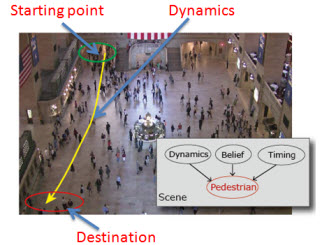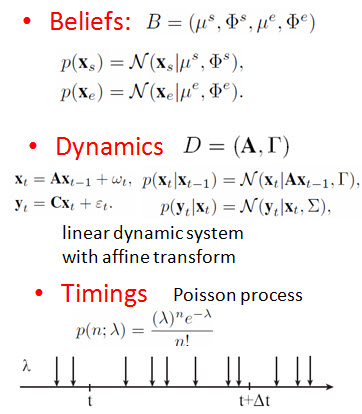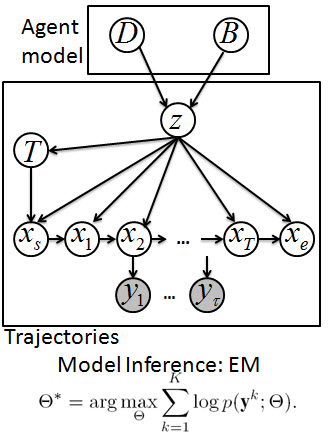Learning Mixture Model of Dynamic Pedestrian-Agents
Bolei Zhou1, Xiaogang Wang2,3, and Xiaoou Tang1,3
1Department of Informaiton Engineering, 2Department of Electronic Engineering, The Chinese University of Hong Kong
3Shenzhen Institutes of Advanced Technology, Chinese Academy of Sciences
[Paper] [Simulation Video] [Dataset] [Presentation]
1. Motivation
Collective crowd behaviors widely exist in nature. Here are some examples of collective crowd behaviors:

To understand these collective crowd behaviors, we need to figure out the unique features of collective crowd behaviors. From the study of social science, there are three critical features of collective crowd behaviors:
- vanishing of individual personalities
- new characteristics beyond individual behaviors
- shared beliefs and common goals
In our project, we would like to understand the collective crowd behaviors in New York Grand Central Station, and build computational model to learn these collective motion patterns from highly fragmented trajectories.

However, there are a lot of challenges such as 1) different collective patterns mixed together 2) high detection and tracking errors due to crowdedness.
3. Experimental Results
The framework of Dynamic Pedestrian-Agents has a lot of applications:
- Simulating crowd
- Segmenting semantic regions
- Classifying collective behaviors
- Predicting behaviors of pedestrians
- Detecting abnormal Behaivors

Simulation Video of Dynamic Pedestrian-Agents






